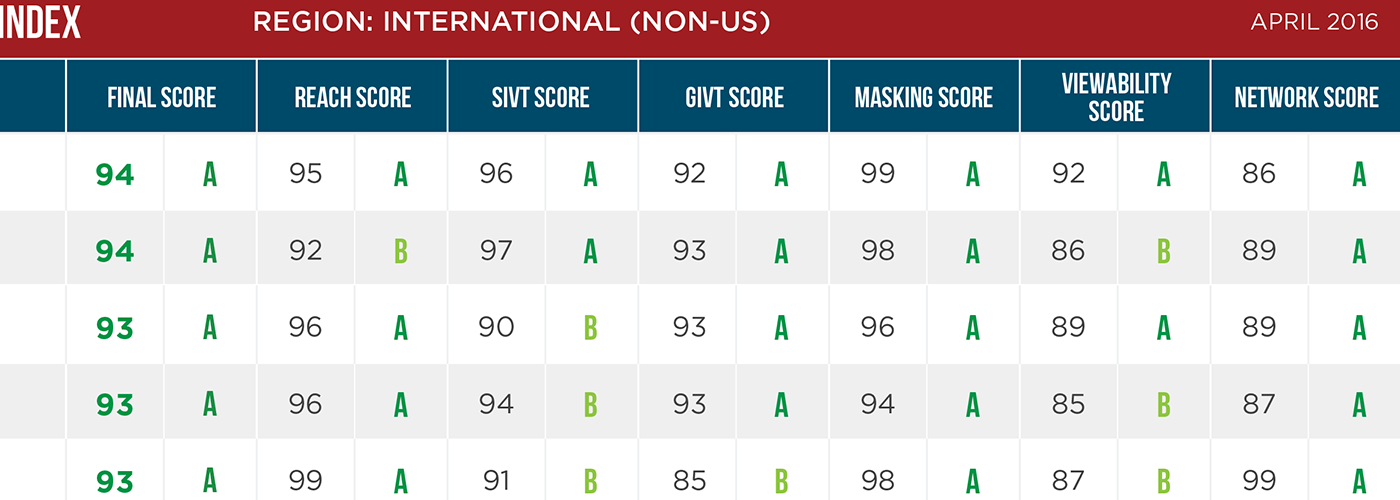
Pixalate, Inc., the leader in fraud protection and data intelligence, today unveiled its Global Seller Trust Index (GSTI) for April 2016. Utilizing its proprietary technology, the GSTI analyzes more than 100 billion monthly ad impressions and delivers ratings based upon inventory quality and ad performance, along with traditional reach ranking.
Over the last several months, a few key trends have emerged. First, fraudsters are getting smarter. There has been an increase of 28% in the more “sophisticated" kinds of fraud in Q1 2016. In particular, there has been a significant uptick in the hijacking of devices directly via Trojan Horses that use Doorway sites to generate fraudulent activity. This is a challenge in that that type of activity is difficult to detect.
The good news, though, is that a greater focus and strong progress by platforms in addressing these challenges has been observed. This commitment, along with the efforts underway in the buy-side community, is essential in undermining the efforts of those who seek to destroy confidence in programmatic advertising.
Pixalate congratulates all of the platforms in the GSTI for their proactivity and dedication to restoring trust in programmatic advertising.
About Pixalate’s Global Seller Trust Index (GSTI)
Pixalate’s monthly Global Seller Trust Index is the worldwide standard in programmatic advertising quality ratings. Released monthly, the GSTI evaluates and ranks the quality and integrity of advertising networks and sellers.
Global quality ratings are based upon an analysis of overall effectiveness assessing viewability, fraud, engagement, domain masking, and inventory scores in compliance with recognized industry standards.
To learn more about the methodology and to download the expanded list of top sellers, visit http://www.pixalate.com/sellertrustindex
About Pixalate
Pixalate, Inc. is a leading global intelligence platform and real time-fraud protection provider. Pixalate is a Media Rating Council accredited vendor for display ad viewability. For more information, please visit pixalate.com.
*By entering your email address and clicking Subscribe, you are agreeing to our Terms of Use and Privacy Policy.
These Stories on Company News
*By entering your email address and clicking Subscribe, you are agreeing to our Terms of Use and Privacy Policy.

Disclaimer: The content of this page reflects Pixalate’s opinions with respect to the factors that Pixalate believes can be useful to the digital media industry. Any proprietary data shared is grounded in Pixalate’s proprietary technology and analytics, which Pixalate is continuously evaluating and updating. Any references to outside sources should not be construed as endorsements. Pixalate’s opinions are just that - opinion, not facts or guarantees.
Per the MRC, “'Fraud' is not intended to represent fraud as defined in various laws, statutes and ordinances or as conventionally used in U.S. Court or other legal proceedings, but rather a custom definition strictly for advertising measurement purposes. Also per the MRC, “‘Invalid Traffic’ is defined generally as traffic that does not meet certain ad serving quality or completeness criteria, or otherwise does not represent legitimate ad traffic that should be included in measurement counts. Among the reasons why ad traffic may be deemed invalid is it is a result of non-human traffic (spiders, bots, etc.), or activity designed to produce fraudulent traffic.”

